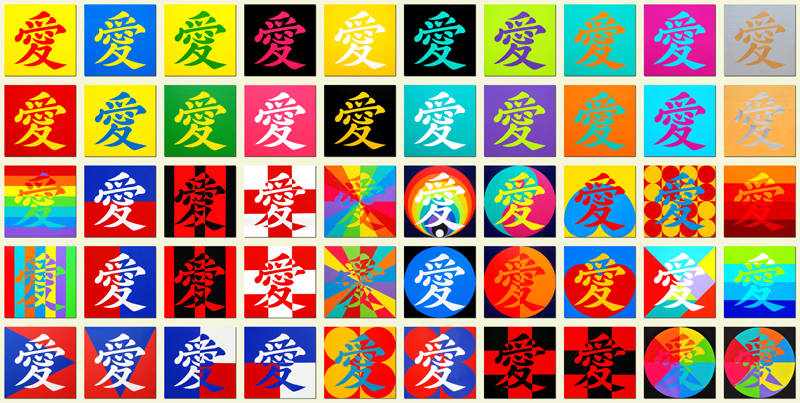Wenlan Hu Frost
Home | Biography | Works | NFT Collections | Exhibitions | Press | Links | Contact
Chinese Calligraphy 2.0 – The Love Character
Abstract Symbolism Series
The first forty-two paintings in the Chinese Calligraphy 2.0 – The Love
Character Abstract Symbolism Series were exhibited at The
Butler Institute of American Art in 2008. The series contains fifty
completed works. The paintings are acrylic on canvas, each measuring
48" x 48" (122 cm x 122 cm). The titles of the paintings are listed
below along with thumbnail images. Following the listing is a
description of the series and the artist's notes on the paintings.
Individual Titles
and Images of the Series
Description
of
the Series
The Artist's
Notes on the Series
Individual Titles And Images of The Series (click on title to
enlarge)
1. Medium Red Love on Light
Yellow No. 1
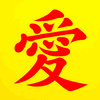
2. Light Yellow Love on Medium
Red No. 1
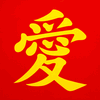
3. Light Yellow Love on
Brilliant Blue No. 1

4. Brilliant Blue Love on
Light Yellow No. 1

5. Light Green Love on Light
Yellow No. 1
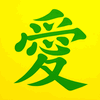
6. Light Yellow Love on Light
Green No. 1

7. Fluorescent Pink Love on
Black No. 1

8. White Love on Fluorescent
Pink No. 1

9. White Love on Medium Yellow
No. 1

10. Medium Yellow Love on Black No.
1
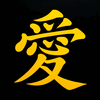
11. Bright Aqua Green Love on Black
No. 1

12. White Love on Bright Aqua Green
No. 1

13. Brilliant Purple Love on
Brilliant Yellow Green No. 1
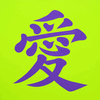
14. Brilliant Yellow Green Love on
Brilliant Purple No. 1
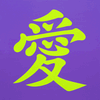
15. Orange Love on Bright Aqua Green
No. 1

16. Bright Aqua Green Love on Orange
No. 1

17. Light Blue Love on Medium
Magenta No. 1
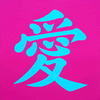
18. Medium Magenta Love on Light
Blue No. 1

19. Iridescent Rich Gold Love on
Iridescent Rich Silver No. 1
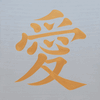
20. Iridescent Rich Silver Love on
Iridescent Rich Gold No. 1
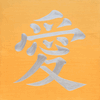
21. The Love of God No. 1

22. The Love of God No. 2

23. The Love of America No. 1

24. The Love of America No. 2
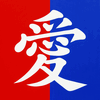
25. The Love of The World Trade
Center No. 1
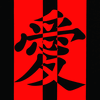
26. The Love of The World Trade
Center No. 2
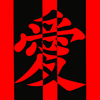
27. The Love of Humanitarianism No.
1
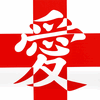
28. The Love of Humanitarianism No.
2
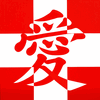
29. The Love of Family No. 1

30. The Love of Family No. 2

31. The Love of Life No. 1

32. The Love of Earth No. 1

33. The Love of Yin and Yang No. 1
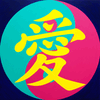
34. The Love of Mars And Venus No. 1

35. The Love of Mars No. 1

36. The Love of Venus No. 1

37. The Love of Eight Eights No. 1
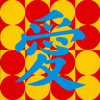
38. The Love of Possibilities No. 1

39. The Love of Hotness No. 1

40. The Love of Coolness No. 1

41. The Love of Ohio No. 1

42. The Love of Ohio No. 2

43. The Love of Texas No. 1
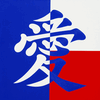
44. The Love of Texas No. 2
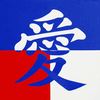
45. The Love of Chinese Double
Eights No. 1
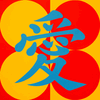
46. The Love of American Double
Eights No. 1
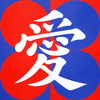
47. The Love of Humanitarianism No.
3
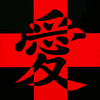
48. The Love of Humanitarianism No.
4
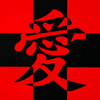
49. The Love of The World No. 1

50. The Love of The World No. 2
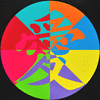
Description of The Series
Chinese-born
American artist Wenlan Hu Frost is the first artist to present the
Chinese character as a symbolic abstract art form on a Western
medium. She has developed an Abstract Symbolism painting style to
execute her first major body of art works, which emphasizes a high
visual impact to viewers while delivering a simple message with
symbolic abstract images. Her representative works in her Chinese Calligraphy 2.0 – The Love
Character Abstract Symbolism Series is a product of the artist's 32 years of
life and cultural experiences in China and 17 years in the United
States. The series blends Chinese and Western artistic
characteristics, creating a unique and distinctive artistic
representation of a hybrid of traditional Chinese and modern
Western cultures.
The series was conceived in December 2006 when
Wenlan Hu Frost started to explore her own avant-garde artistic
style. In studying world modern art history, she noticed that many
Western master painters were inspired by Asian art. Then she
realized that the Chinese character is itself a beautiful and
ancient abstract art form that was not fully appreciated by the
Western world. One of the reasons is that since the creation of
Chinese characters from paintings or pictographs four thousand
years ago, traditional Chinese calligraphy has largely been
presented in a format of black ink on rice paper (or Xuan paper)
over the last two thousand years. This format has its own unique
beauty, but it is not a familiar medium for the Western world.
Wenlan Hu Frost decided to become the first
artist to present the Chinese character in a Western medium as a
modern abstract art form. She believes that through a Western fine
art medium presentation, the world could better appreciate the
Chinese character's extraordinary abstract artistry and
brilliance. The artist deeply believes that the Chinese character
is not only a significant part of Chinese culture, but also a very
important part of abstract art history for the entire world. Thus,
it is extremely meaningful to present this special abstract art
form to the Western world in the Western fine art medium.
After systematic study, research, planning, and
testing, Wenlan Hu Frost started to paint her first series in May
2007. She had completed initial 40 paintings for exhibition by
December 2007. The series, which is entitled Chinese Calligraphy 2.0 – The Love
Character Abstract Symbolism Series, presents the Chinese
character as a modern abstract art form. The artist refers to the
traditional ink on paper format of Chinese calligraphy as Chinese Calligraphy 1.0. To
keep it simple and straightforward, the artist focused exclusively
on the Chinese Love Character 愛 ai (which is pronounced like
“eye” and means “Love” in Chinese) as her motif for the initial
forty paintings of the series to show the ancient abstract
artistry of Chinese character art in a modern Western fine art
medium (acrylic on canvas).
One reason that the artist initially focused on
the word “Love” as the first character for her paintings is that
she also believes love is a universal source of goodness. Mankind
was created by a loving God. Everybody in the world loves someone
or something, and they all share a desire to love and to be loved.
Love is such a beautiful thing for human beings. Love is abstract
yet concrete, complex yet simple, colorful yet plain, dynamic yet
static, emotional yet peaceful, physical yet spiritual. Thus,
painting 40 Chinese Love Characters in different color combination
schemes and various symbolic background designs is never too much
Love.
In addition, the form of the Chinese Love
Character is absolutely beautiful and stunning. The Chinese Love
Character is a form of logical aggregates or associative
compounds, which uses a combination of pictographs to symbolize
its abstract concept. It is composed of three segments. The first
segment on top is derived from the picture of a “Home” with people
and a roof, symbolizing a family. The second segment in the middle
is the Chinese character "Heart" derived from a heart pictograph.
The third segment at the bottom is part of the Chinese character
"Friend" derived from a pictograph of hands shaking or embracing.
The Chinese Love Character symbolizes that Love is about family
and friends who love one another with all their hearts.
Wenlan Hu Frost studied various styles of
Chinese calligraphy and major Chinese master calligraphers' works,
trying to choose her niche style for the paintings. She concluded
that Chinese regular script (kaishu)
captured the original abstract elegance of the Chinese character
very well, so it is relatively easy for Western viewers to
understand and appreciate. Other styles such as cursive script (xingshu or caoshu) may be more artistic
and painterly similar to Western Abstract Expressionism, but they
have deviated too far away from the Chinese character's original
beauty for Western viewers to appreciate. In addition, all
beginners of Chinese calligraphy study and practice kaishu first. It is also one
of the most widely used styles in China. Therefore, the artist
decided to choose the traditional Chinese kaishu with a twist of her
own design. Her character design shows bolder, thicker, rounder,
grander, and more lively strokes than most traditional and
contemporary kaishu
styles, which makes her character image more powerful and majestic
and masculine, yet graceful and elegant and feminine in the
meantime.
For the first twenty paintings, she chose a
very simple color combination scheme to help viewers to focus
mainly on the abstract beauty of the Chinese Love Character
itself. This combination is a single foreground color and a single
background color. Since everybody has his or her own favorite
color(s), the artist employed a variety of color
foreground/background combinations so as to appeal to the tastes
of a broad spectrum of viewers. She designed three sets each of
warm or cool colors with yellow, black or white combinations, as
well as complementary color combinations. She also used a special
gold and silver combination for one pair of paintings. She
deliberately avoided the black character and white background
design, because they are relatively close to the typical black ink
on white paper imagery format of traditional Chinese calligraphy (Chinese Calligraphy 1.0).
The next 10 paintings come in pairs; these are
more sentimental, representing fragments of reflections of the
artist's life and value system. The artist used symbolic images as
backgrounds and put the Chinese Love Character's image either on
top of it or immersed in it to convey messages. Some of the pairs
have identical images with inverted colors. The final 10 paintings
are the artist's expressions of certain broader interesting topics
in her life.
Wenlan Hu Frost also shaped a definition of her
painting style as her work on the series progressed. After she
completed the fortieth painting, the term Abstract Symbolism came
to her mind as this seemed to accurately describe the style in
this series. The symbolism takes three forms in her paintings.
First, the Chinese character itself is a symbol of Love , which is
the primary theme of the series. Secondly, her use of color is a
second layer of symbolism, representing different moods. Thirdly,
her use of shapes in the background in the second half of the
series adds a final layer of symbolism, such as the two rectangles
representing the Twin Towers of the World Trade Center. This third
layer attaches secondary themes such as family and
humanitarianism. Both the use of the Chinese character and the use
of shapes are abstract rather than representational. The primary
theme of Love and some of the secondary themes of family,
humanitarianism, etc. are representative of absolute and universal
ideals. Some of the other secondary themes, such as the World
Trade Center, express a personal rather than a universal theme as
it was based on the direct personal experience of the terrorist
attacks.
Today it is quite natural to view the Chinese
character as an abstract symbol. However, Chinese characters began
as pictographs, which were to a degree representation in nature.
Over time, most of these characters evolved so that their
representational nature grew increasingly abstract. Today, only a
few percent of Chinese characters retain a representational
pictographic relationship with what they represent.
In addition to showing the world the
extraordinary abstract artistry and brilliance of the Chinese
character, she also found a higher meaning for her series. By
using the abstract and symbolic Chinese Love Character as her
motif, combined with emphasis of the high visual impact to the
viewers through brilliant colors and abstract background designs,
she hopes that she could also deliver the world a simple Love
message with these symbolic abstract Love images. It is the
artist's hope that the Chinese Love Character could become the
first Chinese character that will be recognized by many Western
people.
The artist presents Chinese calligraphy as a
new version Chinese Calligraphy
2.0, in contrast to what she describes as Chinese Calligraphy 1.0, the
traditional presentation of Chinese calligraphy in the format of
ink on paper. Chinese
Calligraphy 2.0 strips away the traditional color
limitations (black on white), medium (ink on paper), and use of
characters as part of a written message. Her work presents the
Chinese character as a motif rather than as part of a written
message; the goal is to show the abstract artistry of the
character itself. (In particular, this distinction will be easier
for Western viewers, most of whom do not recognize Chinese
characters and thus cannot “read” them and for whom it will
therefore be easier to focus on the artistic representation of the
characters.) The paintings use a modern Western medium – acrylic
on canvas – and they are presented in a large format with
brilliant colors in a contemporary hard-edged American painting
style.
Chinese
Calligraphy 2.0 is static in comparison with the dynamism
of Chinese Calligraphy 1.0.
Chinese Calligraphy 1.0
is dynamic in the sense that the writing is performed through a
few rapid strokes of the brush; the dynamics of the calligrapher's
movements are directly recorded in the form of his writing, which
is similar to Western Abstract Expressionism. While this dynamism
possesses an undeniable power and beauty, it also provides a set
of constraints on the calligrapher and his work; this style does
not permit revision or refinement or correction. Western viewers
of these traditional works may sense a feeling of incompleteness
or imperfection that may cause some sub-conscious anxiety. Also,
whereas the dynamic variation in the character shape may represent
a “style” to a Chinese viewer, it may be somewhat confusing to the
Western viewer, who lacks familiarity with the basic unvaried
form. Chinese Calligraphy 2.0
transcends this dynamic constraint, permitting a higher level of
refinement or polish. The end result is a more static image, which
does not evidence the dynamic movements of the artist in the shape
of the character but only through the texture of the brush
strokes. This more static approach results in a more refined and
deliberate fine art product, which evokes a greater feeling of
spiritual peace and tranquility in the viewer.
The Artist's Notes on The Series
Painting 1. – 20.
Paintings 1
through 20 each feature a single foreground color and single
background color; the variation is accomplished through the
selection of different color combinations in order to deliver a
strong visual impact. The interpretation of the colors is largely
left to the viewer, as color associations can be highly personal
and cultural.
Paintings 1 – 6 feature the color yellow as
both foreground and background juxtaposed against the three
additive primary colors red, green, and blue. These three pairs
are unique among the first twenty paintings in that they contain
only colors that are the union of the standard additive and
subtractive primary colors, sometimes referred to as the four
primary colors or pure colors: yellow, red, green, and blue.
Paintings 7 – 12 use pink, yellow, and aqua as
backgrounds with a white foreground and as foregrounds on a black
background. Unlike the first six, the colors are not inverted here
to avoid the use of a white background or black foreground that is
characteristic of traditional Chinese calligraphy (Chinese Calligraphy 1.0).
Paintings 13 – 18 pair (nearly) complementary
color pairs: green/purple, orange/aqua, and blue/magenta. These
complementary pairs have a powerful effect on some viewers who
perceive apparent throbbing motion when viewing them. The apparent
motion combined with the bright, almost fluorescent colors, can
deliver an “electric” or “neon” association for some viewers.
Paintings 19 and 20 feature an isolated pair of
gold and silver, the colors of precious metals, which are intended
to symbolize the preciousness of Love.
21.The Love of
God No. 1
22.The Love of
God No. 2
These paintings
are inspired by the passage in Genesis 9:8–17, in which the
rainbow is named as a symbol of God's love and His promise to
mankind that there never be a flood to destroy the earth again.
The artist immersed the Chinese Love Character in an abstract
rainbow background to represent God's love. The purple color at
the top along with the purple at the bottom form a triangular
composition, which symbolizes the Holy Trinity. The Love of God No. 1 shows
the colors arranged horizontally in the order consistent with the
order found in a real rainbow. The
Love
of God No. 2 shows the colors arranged vertically in a
different order. No matter how the rainbow changes, the viewers
still can see the Chinese Love Character, showing that God's
everlasting love will be always there.
23.The Love of
America No. 1
24.The Love of
America No. 2
The artist
expressed the love of the United States of America with the red,
white, and blue colors of the American flag. The backgrounds are
red and blue, split in one case horizontally and in the other case
vertically, with a white Chinese Love Character. These paintings
can be interpreted as symbolic flags in which the Chinese Love
Character represents love of country and love of the ideals which
characterize America, such as faith, freedom, justice, and
opportunity.
25.The Love of
The World Trade Center No. 1
26.The Love of
The World Trade Center No. 2
While the World
Trade Center is loaded with associations on a national and
international level, it has intensely personal associations for
the artist herself:
The destruction
of the World Trade Center is the saddest experience in my entire
life and one that I will never forget. I lived one block away
from the World Trade Center for nearly 10 years. I enjoyed
appreciating the majestic WTC twin towers from my living room
window and greeting them every day. I also worked in the World
Trade Center South Tower between 1992 to 1997 for Dean Witter
Reynolds as an equity research analyst. I experienced the
terrorist bombing of the WTC in 1993. It took me an hour to
evacuate from the 63rd floor, walking down a dark, smoke-filled
stairwell. I also experienced the 9/11 terrorist attack on the
WTC in 2001. I witnessed the second plane pierce the South Tower
from my living room window and watched the twin towers fall from
a nearby park. The dust clouds from the collapse of the towers
enveloped me and my family, cutting off our sunlight and fresh
air. We evacuated across the Hudson River and spent that night
in a makeshift Red Cross shelter in New Jersey. Through the
floor-to-ceiling window of that shelter across the river I
watched the orange glow above the WTC site as the flames
continued to burn throughout the night. It was many days before
I was able to return to my apartment to survey the damage caused
when debris from the collapsing towers shattered the windows and
filled my apartment with dust and broken glass.
For
many people, the World Trade Center symbolizes New York or
America or American capitalism, but for me it was my workplace,
my neighborhood, and the egress point for nearly every subway
trip that I took. For me, the World Trade Center was where I
liked to spend time at the Borders bookstore, where I took my
son to celebrate his cousin's birthday at my nephew's nursery
school, the first and last point of nearly every trip I took in
the city, and the view from my living room window.
This pair of
paintings expresses the deep sadness that the artist experienced
on that day. In The Love of The
World Trade Center No. 1, the black in the background
represents the smoke that covered the sky, the two red columns
represent the WTC Twin Towers on fire, and the broken Chinese Love
Character symbolizes the artist's broken heart. In The Love of The World Trade Center
No. 2, the red background represents the victims' blood,
two black columns represent the death of the WTC Twin Towers, and
the broken Chinese Love Character is still there. The terrorists
destroyed the WTC Twin Towers, but they can never destroy my love
toward the World Trade Center, even if it is broken.
27.The Love of
Humanitarianism No. 1
28.The Love of
Humanitarianism No. 2
This pair
symbolizes the love expressed through humanitarian action by
medical professionals. Here the red represents blood and white
represents the white uniforms of doctors and nurses, who are
referred to as “angels in white” in China. The broken Chinese Love
Character symbolizes the pains and sorrows associated with the
emotionally and physically challenging work of saving lives.
29.The Love of
Family No. 1
30.The Love of
Family No. 2
In these
paintings the artist used different colors to represent different
family members with different personalities. The familial love is
shown as beaming sunshine that showers upon each individual member
of the family. No matter how family members interact with one
another, despite how different from one another they are, their
mutual love is always present.
31. The Love of
Life No. 1
This painting
expresses the love of life using a simile: life is like traveling
through a space tunnel in the vast dark universe. A human life
starts like the morning red sun, full of promise. As life goes on,
it experiences periods of growth (orange and yellow), maturity
(green, aqua, and blue), then old age (purple). After its physical
death (black), it embraces its spiritual eternity (white, which
consists of all of the colors). Life is such a beautiful journey
for mankind.
32. The Love of
Earth No. 1
This painting
expresses the love for the planet that we humans all call our
home. From the moon, our marvelous earth looks like a brilliant
blue sphere against black space. The white Chinese Love Character
evokes clouds surrounding the earth.
33. The Love of
Yin And Yang No. 1
The artist
borrowed the traditional Chinese Yin and Yang symbol that
describes the universal principles of the world in which we live.
Yin and Yang are two major opposite but complementary elements in
the universe. The harmony of Yin and Yang is essential to
mankind's wellbeing. Yin and Yang symbolize two opposite yet
correlated elements such as heaven and earth, day and night, East
and West, good and evil, etc. One cannot exist without the other.
Traditional Chinese Yin and Yang symbols are black and white, but
the artist has replaced those colors here with aqua and magenta as
opposite colors. Dark blue symbolizes the universe we live in. The
neutral light yellow Chinese Love Character can unite the Yin and
Yang harmoniously together, symbolizing the power of Love.
34. The Love of
Mars And Venus No. 1
This painting
is inspired by Genesis 2:24 and Matthew 19:5 with a playful
reference to the title of Dr. John Gray's best selling book Men are from Mars, Women are from
Venus. God said that a man “shall a man leave his father
and his mother, and shall cleave unto his wife: and they shall be
one flesh”. The artist symbolizes the interdependent relationship
of men and women through this image. A red Mars and an orange
Venus travel through the deep blue universe. At the moment they
touch each other, they instantly become one planet with half red
and half orange. Mars and Venus intertwine, and the Chinese Love
Character becomes a strong binder to unite them together. That is
the power of Love. That is how God designed us to be.
35.The Love of
Mars No. 1
36.The Love of
Venus No. 1
These two
paintings represent different views of love that men and women
have. The artist chose opposing orientations of the heart shape
and different permutations of the same colors to symbolize the
different views of love. Although men and women have different
views toward love, the heart shapes are the same, even though the
perspectives are different.
37. The Love of
Eight Eights No. 1
The background
of this painting is the image of eight abstract eights consisting
of 16 circles. The inspiration for the eight eights is the
official Olympic Games' starting date and time 8:00 am Beijing
time, August 8th, 2008. The artist added another four eights
(including minutes, seconds, eciseconds and centiseconds, which
are used in timing certain Olympic events) to attain eight eights,
symbolizing the tremendous pride of the Chinese people, who have
awaited this moment for many years. The number eight has for
centuries been considered the luckiest number in China. Thus,
eight eights are eight times lucky. The red and yellow eights are
the colors of the Chinese flag, and the blue Chinese Love
Character symbolizes the clear blue sky.
38. The Love of
Possibilities No. 1
This painting
is inspired by the thousand-year-old Chinese puzzle called the
“Tangram”, which consists of seven different pieces: five right
isosceles triangles, one square, and one parallelogram. The goal
of the puzzle is to use one's imagination to form various images,
each by arranging all seven pieces without any overlap. The puzzle
is itself a type of art form as it is used to create images. The
Tangram in this painting symbolizes the numerous possibilities in
life.
39.The Love of
Hotness No. 1
40.The Love of
Coolness No. 1
These two
paintings were inspired by the painting The Love of God 1.0, in which the colors are
arranged in a leap-frog style where the background color of one
section becomes the foreground color of the next section. The
artist noticed a phenomenon in that painting, particularly in the
aqua on blue section, in which the Chinese Love Character seemed
to be immersed in water. The artist further explored this
inter-color immersion illusion by breaking down the rainbow
spectrum in two halves for these two paintings.
As a result,
the warm color scheme painting looks like a sunrise lovescape in
the desert, while the cool color scheme painting looks like a
moonrise lovescape over the ocean. The immersion illusion will be
more evident if the viewer gazes at the paintings from a distance.
41.The Love of
Ohio No. 1
42.The Love of
Ohio No. 2
These two
paintings are in the collection of The Butler Institute of
American Art and were gifts of the artist. Wenlan Hu Frost painted
these two paintings to express her love for the state of
Ohio. Ohio is a very special state to the artist. It
is the state that her husband Daniel Allen Frost came from, the
state where she was married, and the state where she had her first
solo museum exhibition. The artist views the gift as a token to
show her love for Ohio, as well as her deep appreciation of Dr.
Louis Zona and his entire staff at the Butler Institute.
These two paintings are based on the triangular
shape and the red, white, and blue colors of the Ohio flag. The
background of each painting is red with a blue triangle; one is
horizontal and the other vertical. A white Chinese Love Character
replaces the white circle, stars, and stripes of the Ohio flag and
represents the love of Ohio.
43.The Love of
Texas No. 1
44.The Love of
Texas No. 2
These two
paintings are painted to show the artist's love of Texas, where
she currently resides. Texas is a very special state for the
artist. It is the state that she first studied art and started her
career as an artist, the state that taught her the essence of
liberty and freedom, the state that gave her inspiration for her
art with its vast natural beauty, the state whose spirit is rooted
in The Alamo.
The paintings are based on the Texas flag, one
displayed horizontally and the other vertically with the red,
white and blue colors and the Love Character in place of the Lone
Star. These paintings may be interpreted as symbolic flags in
which the Chinese Love Character represents the love of the state
of Texas.
45.The Love of
Chinese Double Eights No. 1
The background
of this painting is the image of two abstract eights consisting of
four circles. The number "eight" has for centuries been considered
by the Chinese as the most auspicious among numbers. Thus,
double eights are twice as auspicious, similar to "double
happiness" that has been associated with weddings for centuries in
China. The red and yellow eights are the colors of the
Chinese flag, and the blue Chinese Love Character symbolizes the
clear blue sky, which represents the good luck blessing.
These three primary colors are also the most widely used color
combination in many Chinese media.
46.The Love of
American Double Eights No. 1
This painting
is similar to No. 45, except the colors of the background and
foreground of this painting uses the red, white, and blue colors
of the American flag. The backgrounds are red and blue eights
consisting four circles, with a white Chinese Love Character as
foreground.
47.The Love of
Humanitarianism No. 3
48.The Love of
Humanitarianism No. 4
This pair of
paintings were created in May 2008 to memorialize two extremely
sad moments in Chinese history. The
Love of Humanitarianism No. 3 recorded the sad moment of
May 12, 2008, 2:28 pm, when the tragic Sichuan earthquake
occurred. The red cross symbolizes the bleeding earthquake
victims, while the black background symbolizes the darkness
enveloping heaven and earth. The fragmented black and red Chinese
Love Character symbolizes more than one billion Chinese people's
broken hearts. The Love
of Humanitarianism No. 4 recorded the Chinese national
mourning moment of May 19, 2008, 2:28 pm. The black cross
symbolizes the earthquake victims' perished lives, while the red
background symbolizes candle light, shining on heaven and earth,
from more than a billion Chinese people to pray for the lost
souls. The fragmented red and black Chinese Love Character
symbolizes more than a billion Chinese people's loving hearts and
their deep condolences toward the Sichuan earthquake victims.
49.The Love of
The World No. 1
50.The Love of
The World No. 2
This pair of
paintings symbolize the love of the world. The black background
symbolizes the vast dark unknown universe. The sphere symbolizes
the earth orbiting in dark space. Eight colors symbolize people
from different countries, races and cultural backgrounds sharing
this one world - our beautiful earth. This pair of paintings
presents mankind's interdependent relationship. We share one
world. We interact with, influence, and depend on one another.
Love is the most powerful force that makes us live harmoniously in
this one world, and the Chinese Love Character symbolizes this
strong binder to link us together. The reason that the
artist chose eight colors is because the number eight has for
centuries been considered the most auspicious number in China. In
these paintings, the use of eight colors also represent the
artist's sincere hope for peace and friendship among nations and
peoples.
The major difference between these two
paintings is the difference in their color sequence arrangement.
In The Love of The World No. 1,
the color arrangement is more natural and harmonious, which
pleases the eye; in The Love of
The World No. 2, the warm and cool color juxtaposition
arrangement makes the image full of challenges and vitality.
©
2024 Wenlan Hu Frost. All Rights Reserved.

